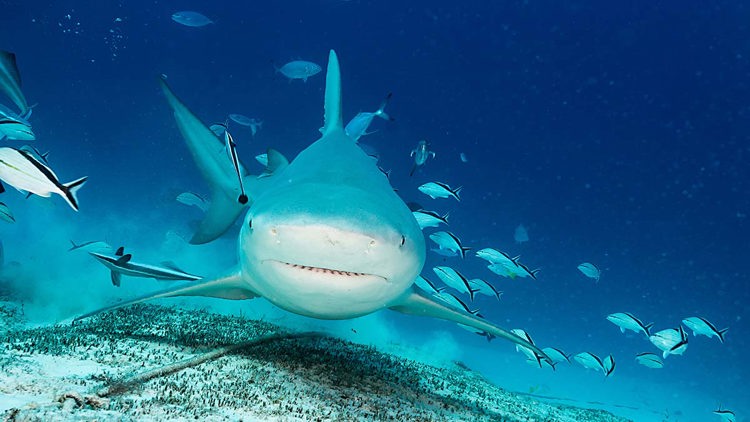GALVESTON, Texas — A study by Texas A&M researchers showed a dramatic increase in the baby bull shark population in several brackish Texas waterways that have a combination of freshwater and seawater.
While most sharks spend their entire lives in the ocean, bull sharks are one of the few species that use freshwater environments as nurseries.
According to experts with TAMU, young bull shark numbers have been increasing in estuaries like Galveston Bay and Sabine Lake over the past 40 years, particularly where they intersect with rivers like the Trinity, Sabine and Neches. These brackish areas may offer protection from predators, including bigger sharks.
Researchers say the increase in juvenile bull sharks is no cause for alarm. While adult bull sharks have been known to attack humans without being provoked, they say the babies aren't a threat because they haven't developed the skills to hunt larger prey.
Baby bull sharks thrive in warmer waters
Warmer waters due to climate change are harmful to many fish species. Higher temperatures increase food requirements, stress levels and disease so several fish populations in the Gulf of Mexico, including mullet and flounder, have declined.
However, researchers say young bull sharks appear to thrive in warmer waters.
In coastal Texas from Sabine Lake to Matagorda Bay, the population of baby bull sharks increased up to eightfold over the past 40 years, a recent study showed. Warmer waters allowed baby bull sharks to remain in their natal estuaries longer during their first year before overwintering in the Gulf of Mexico, increasing their survival to the next life stage.
TAMU experts warn the rise in bull sharks may cause a decline in other fish species favored by humans, including prey like mullets, drums, herrings and catfish.
Young bull sharks help ecosystems
By moving between freshwater and marine ecosystems to feed and rest, TAMU researchers say the juvenile bull sharks also help the ecosystems withstand climate change.
"Feeding and resting in different locations can improve the ability of these ecosystems to withstand disturbances like warming weather conditions because if one habitat is disturbed, the other is still supported," they explained.



